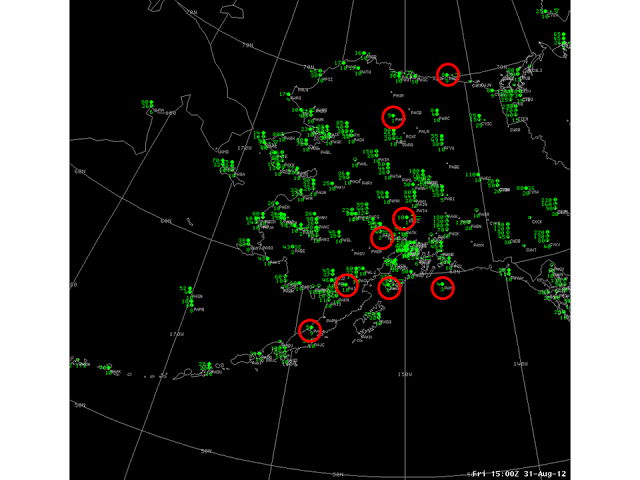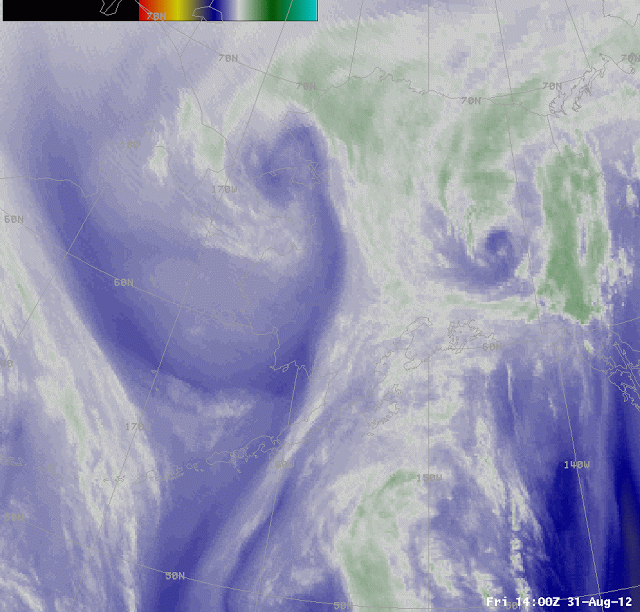The loop above cycles through the 1400 UTC Water vapor imagery, the 10.7 micron infrared image, the brightness temperature difference (10.7 – 3.9), the GOES-R IFR Probabilities computed from GOES data, the GOES-R IFR Probabilities computed from MODIS data, and the surface observations/ceilings. The complex large-scale weather system over northwest Alaska is means that southerly winds over eastern Alaska are drawing moisture and cloudiness northward from the Gulf of Alaska. Multiple cloud layers in this moist flow means that the traditional method of fog/low stratus detection (the brightness temperature difference between 10.7 and 3.9 micrometers) will be challenged. Furthermore, on this particular day, IFR conditions (the observation map is below; stations with IFR conditions are circled in red) are most frequent underneath the multiple cloud layers in the eastern part of the state, and at high levels, such as in the Brooks Range.
The GOES-R IFR probability field suggests higher possibilities of IFR conditions in regions where IFR conditions are observed: near Anchorage, on the Aleutian peninsula and in the Brooks Range.
 |
| Observations over Alaska at 1500 UTC 31 August. IFR conditions highlighted by red circles. |

